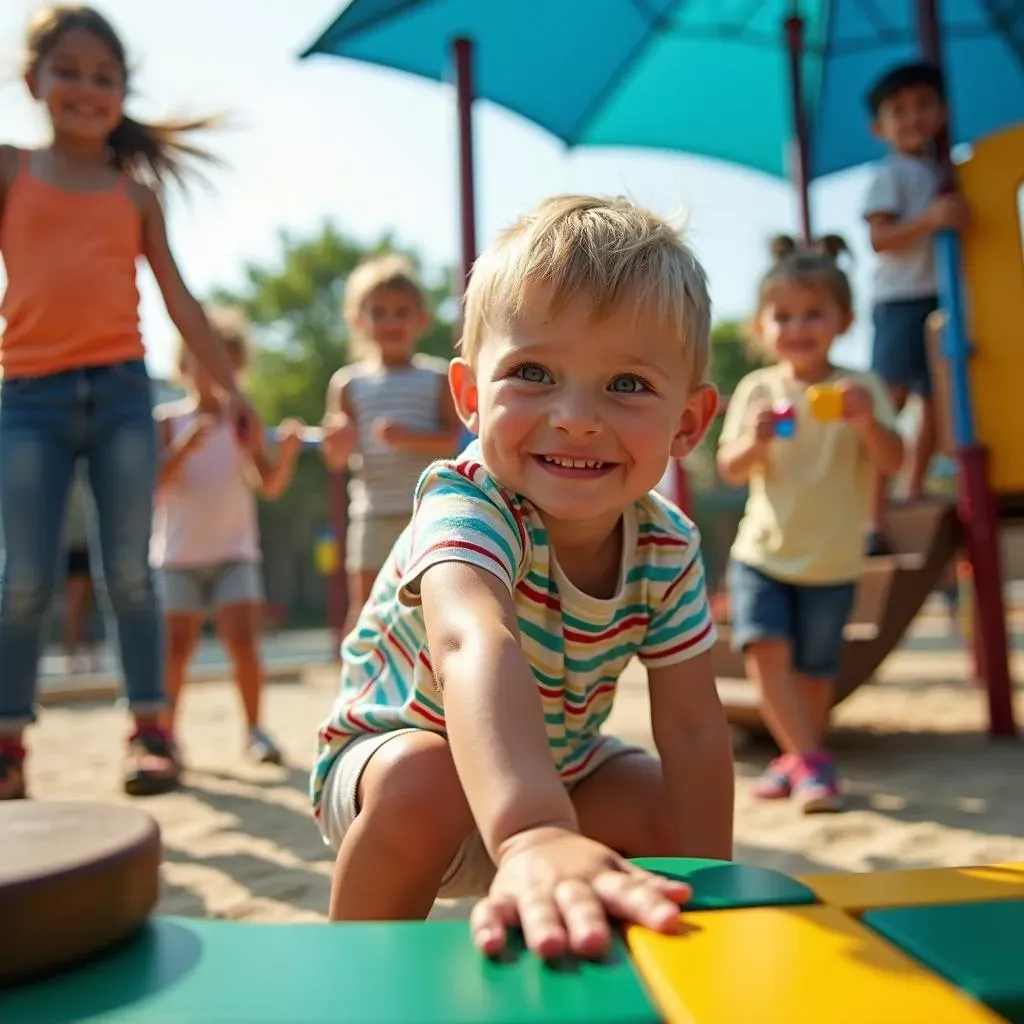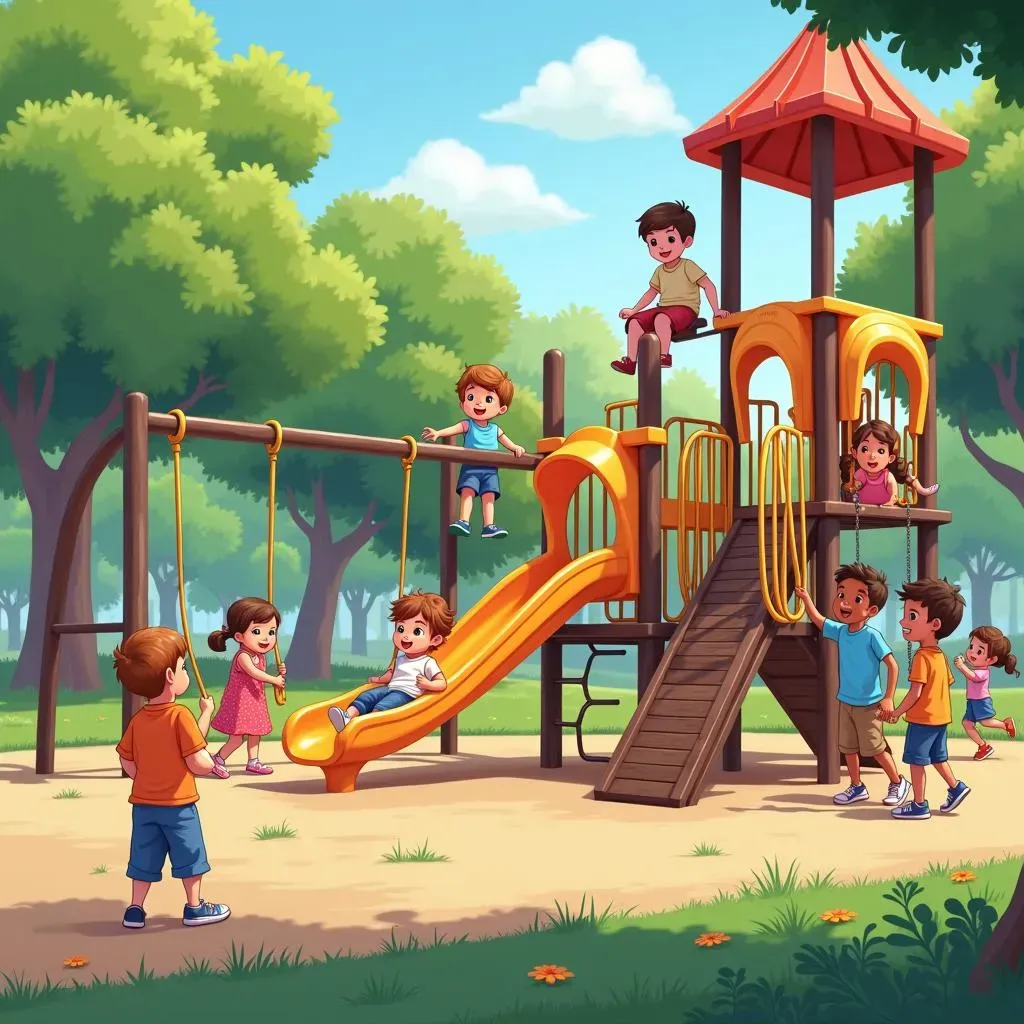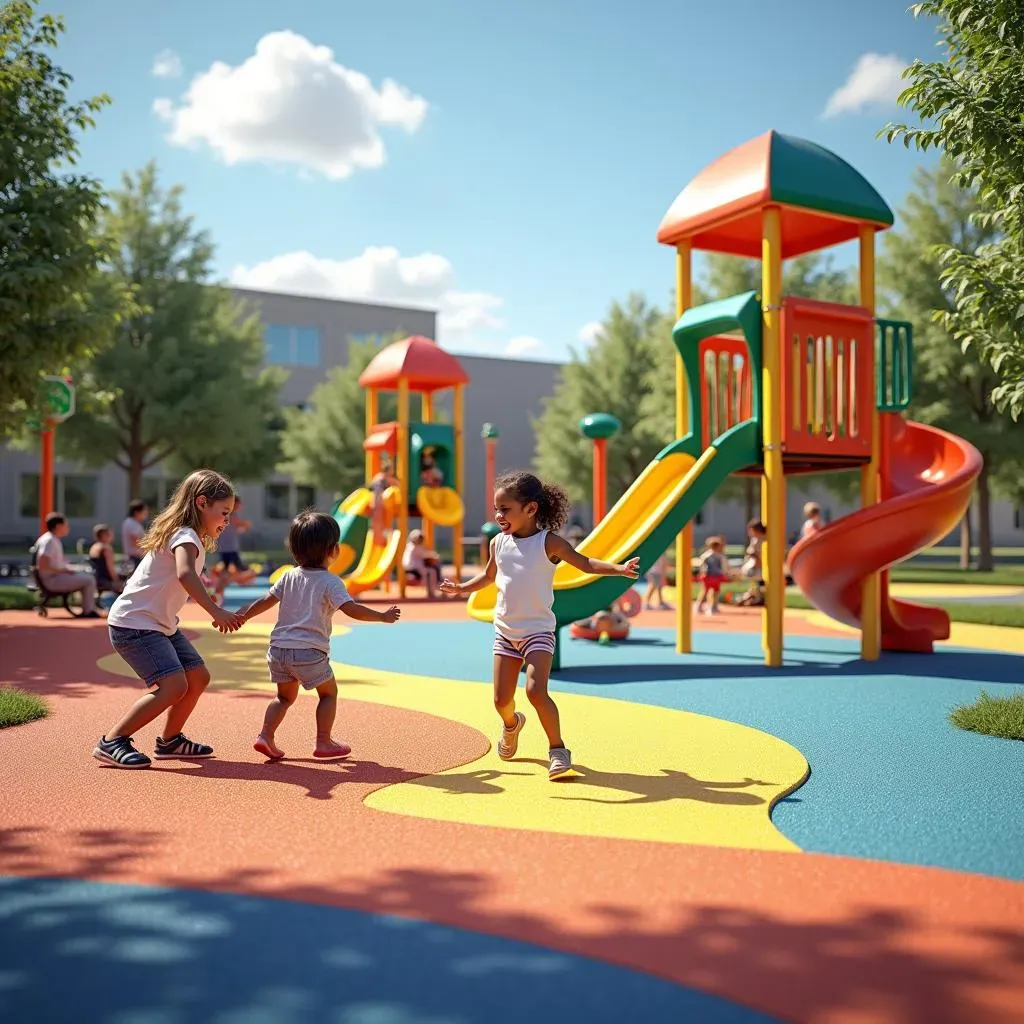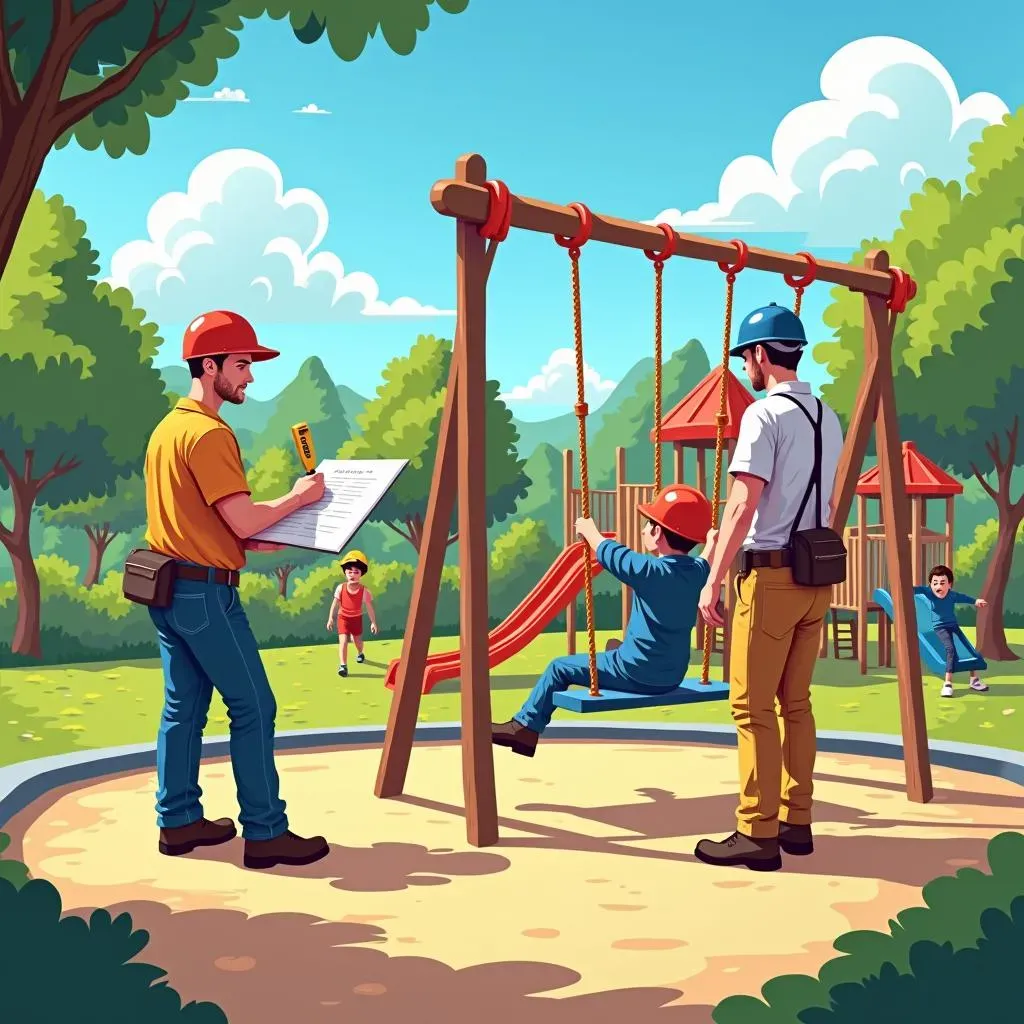Table of Contents
Looking to create a vibrant and engaging outdoor play space? Commercial outdoor playground equipment is the cornerstone of any successful park, school, or community center. But choosing the right equipment can feel overwhelming. From understanding the developmental benefits for children to navigating safety standards and selecting the perfect play structures, there's a lot to consider. This article is your comprehensive guide to navigating the world of commercial outdoor playground equipment. We'll explore how these playgrounds foster cognitive, social, and physical development in children. Then, we'll dive into the crucial factors to consider when making your selection, from age appropriateness and accessibility to safety regulations and budget. We'll also break down the different types of play structures available, highlighting their unique features and benefits. Finally, we'll cover the essential aspects of installation and maintenance to ensure your playground remains a safe and enjoyable space for years to come. Get ready to transform your outdoor area into a hub of activity and fun with the perfect commercial outdoor playground equipment!
Benefits of Commercial Outdoor Playground Equipment for Child Development

Benefits of Commercial Outdoor Playground Equipment for Child Development
Cognitive Skill Enhancement Through Play
Commercial outdoor playground equipment isn't just about fun and games; it's a crucial environment for cognitive development. Structures designed for climbing and navigating challenge children to develop problem-solving techniques. They learn to assess risks, plan their movements, and adapt to different spatial arrangements. This active engagement builds spatial awareness, enhances memory, and fuels their imagination in a way that's both natural and intuitive. Think of a child figuring out the best way to climb a climbing wall – they are actively engaging in problem-solving!
Moreover, playground activities often involve following rules and instructions, whether it's taking turns on the slide or participating in group games. These experiences help children develop crucial cognitive skills like attention, focus, and self-regulation. The playground becomes a dynamic classroom where learning happens organically through play.
Social and Emotional Growth on the Playground
The playground is a social hub where children learn to interact, cooperate, and navigate social dynamics. Commercial outdoor playground equipment encourages kids to engage in collaborative play, fostering vital social skills such as communication, empathy, and teamwork. When children play together, they learn to share, negotiate, and resolve conflicts – skills that are essential for success in all aspects of life.
Furthermore, playground experiences contribute significantly to emotional development. Overcoming challenges on the playground, such as mastering a climbing structure or successfully navigating a swing set, builds confidence and self-esteem. Children learn to manage their emotions, cope with frustration, and celebrate their achievements, fostering resilience and a positive self-image.
Physical Development and Health Benefits
Commercial outdoor playground equipment is a fantastic way to promote physical activity and overall health in children. Running, jumping, climbing, and swinging on playground structures helps children develop gross motor skills, improve coordination, and build strength. These activities also contribute to cardiovascular health, bone density, and overall physical fitness.
In addition to structured play, playgrounds offer opportunities for unstructured movement and exploration. Children can run freely, create their own games, and engage in imaginative play, all of which contribute to their physical well-being. By providing a safe and stimulating environment for physical activity, commercial outdoor playground equipment plays a vital role in combating childhood obesity and promoting healthy habits for life.
For example, consider a child swinging on a swing set. They are not only having fun, but they are also developing their core strength, balance, and coordination. This seemingly simple activity has a multitude of physical benefits that contribute to their overall health and well-being.
Key Considerations When Selecting Commercial Playground Equipment

Key Considerations When Selecting Commercial Playground Equipment
Age Appropriateness and Developmental Needs
When choosing commercial playground equipment, age appropriateness is paramount. A playground designed for toddlers will have different features and safety considerations than one intended for school-aged children. Consider the specific age range of the children who will be using the playground and select equipment that is appropriately sized and challenging for their developmental stage.
For younger children, focus on equipment that promotes sensory exploration and gross motor skills, such as slides, swings, and climbing structures with gentle slopes. For older children, opt for more challenging equipment that encourages problem-solving, coordination, and social interaction, such as climbing walls, ropes courses, and complex play structures.
- Toddlers (1-3 years): Soft surfaces, low platforms, gentle slides, and sensory play areas.
- Preschoolers (3-5 years): Swings, small climbing structures, and imaginative play areas.
- School-Aged Children (5-12 years): Climbing walls, ropes courses, and complex multi-activity structures.
Safety Standards and Accessibility Requirements
Safety should be your top priority when selecting commercial playground equipment. Ensure that all equipment meets or exceeds the relevant safety standards and guidelines. Look for certifications from recognized organizations to ensure that the equipment has been tested and meets rigorous safety requirements. Also, make sure to check the surfacing under and around the equipment, it should be made from a material that can cushion falls.
Accessibility is another crucial consideration. Commercial playgrounds should be designed to be inclusive and accessible to children of all abilities. This means incorporating features such as ramps, accessible swings, and sensory play areas that can be enjoyed by children with disabilities. By creating an inclusive playground, you can ensure that all children have the opportunity to play and socialize together.
Consideration | Details |
|---|---|
Safety Surfacing | Ensure adequate depth and coverage of safety surfacing materials like rubber mulch or poured-in-place rubber. |
Equipment Spacing | Maintain proper spacing between equipment to prevent collisions and injuries. |
Accessibility | Incorporate ramps, transfer stations, and accessible play components to accommodate children with disabilities. |
Types of Commercial Outdoor Play Structures and Their Features

Types of Commercial Outdoor Play Structures and Their Features
So, you're getting into commercial playground equipment? Awesome! One of the first things you'll notice is the sheer variety of play structures available. It can be a bit overwhelming, but understanding the different types and their features is key to creating a playground that's both fun and functional. Let's break down some of the most common types you'll encounter:
Traditional Playgrounds: The Classics
Think swings, slides, and climbing frames. These are the building blocks of most playgrounds and offer a great range of activities for kids of all ages. They are designed to promote physical activity and social interaction. You'll find them in various configurations, from simple swing sets to elaborate multi-level structures. These playgrounds are familiar, inviting, and provide a solid foundation for play.
For example, a classic swing set encourages kids to take turns, develop coordination, and experience the joy of soaring through the air. A slide, whether straight or curved, provides a thrilling descent that kids can't resist. And climbing frames challenge kids to use their strength, problem-solving skills, and coordination to reach the top.
Type | Features | Benefits |
|---|---|---|
Swings | Belt swings, tire swings, accessible swings | Develop coordination, balance, and social skills |
Slides | Straight slides, curved slides, tube slides | Provide a thrilling descent and promote physical activity |
Climbing Frames | Ladders, climbing walls, ropes courses | Challenge kids to use their strength, problem-solving skills, and coordination |
Themed Playgrounds: Imagination Unleashed
Themed playgrounds take play to a whole new level by incorporating imaginative elements and storytelling into the design. These playgrounds often feature structures that resemble castles, pirate ships, or jungle landscapes, sparking children's creativity and encouraging role-playing. Themed playgrounds are perfect for creating a truly unique and memorable play experience.
Imagine a child exploring a castle-themed playground, complete with turrets, drawbridges, and hidden passages. They might pretend to be a knight on a quest, a princess in distress, or a dragon guarding its treasure. The possibilities are endless, and the imaginative play that takes place on these playgrounds can have a profound impact on children's cognitive and social development.
Inclusive Playgrounds: Play for Everyone
Inclusive playgrounds are designed to be accessible and enjoyable for children of all abilities. These playgrounds incorporate features such as ramps, accessible swings, and sensory play areas that can be used by children with disabilities. Inclusive playgrounds promote social interaction and create a welcoming environment for all children to play together.
For instance, a ramp allows children in wheelchairs to access elevated play structures, while an accessible swing provides a safe and comfortable swinging experience for children with limited mobility. Sensory play areas, such as sand and water tables, offer tactile and sensory stimulation for children with sensory processing disorders. By incorporating these features, inclusive playgrounds ensure that all children have the opportunity to play and socialize together.
Fitness and Challenge Courses: Active Play for Older Kids
Fitness and challenge courses are designed to promote physical activity and challenge older children and teenagers. These courses often include elements such as climbing walls, ropes courses, and obstacle courses that require strength, agility, and coordination. Fitness and challenge courses are a great way to encourage older kids to stay active and develop their physical skills.
Think of a teenager navigating a ropes course, testing their balance, coordination, and problem-solving skills. Or a group of kids racing each other through an obstacle course, pushing their limits and building teamwork skills. Fitness and challenge courses provide a fun and engaging way for older kids to stay active and develop their physical abilities.
Ensuring Safety and Accessibility in Your Commercial Playground Equipment Design

Ensuring Safety and Accessibility in Your Commercial Playground Equipment Design
Prioritizing Safety Surfacing and Fall Zones
Alright, let's talk safety, because nothing is more important than protecting our kids. The first thing you need to nail is the surfacing. We're talking about creating a safe landing zone around all play equipment. Think about it: kids are gonna be kids, and falls happen. You want a surface that's going to cushion those falls and minimize injuries. Common options include rubber mulch, poured-in-place rubber, and engineered wood fiber. Each has its pros and cons in terms of cost, maintenance, and impact absorption, so do your homework! The key is to ensure adequate depth and coverage according to the equipment's fall height. This means the higher the equipment, the thicker the surfacing needs to be.
Beyond the surfacing material itself, the fall zone is equally crucial. This is the unobstructed area extending around the equipment where a child might fall. Make sure this zone is free from any obstacles like rocks, roots, or sharp edges. The size of the fall zone will depend on the height of the equipment and the type of surfacing material used. Always consult the manufacturer's guidelines and relevant safety standards to determine the appropriate fall zone dimensions. It's better to be over-prepared than to cut corners when it comes to safety!
Surfacing Material | Pros | Cons |
|---|---|---|
Rubber Mulch | Good impact absorption, durable, relatively low cost | Can get hot in direct sunlight, requires periodic replenishment |
Poured-in-Place Rubber | Excellent impact absorption, seamless, accessible | Higher initial cost, requires professional installation |
Engineered Wood Fiber | Natural look, good impact absorption, relatively low cost | Requires regular maintenance, can displace easily |
Designing for Inclusivity: Accessibility for All
Now, let's shift gears and talk about accessibility. An inclusive playground is one where children of all abilities can play together, side by side. This means incorporating features that allow children with disabilities to access and enjoy the equipment. Ramps are a must for accessing elevated play structures, and transfer stations can help children move from their wheelchairs onto the equipment. Accessible swings, with supportive seating and safety harnesses, allow children with limited mobility to experience the joy of swinging.
Don't forget about sensory play areas! These areas provide tactile, visual, and auditory stimulation for children with sensory processing disorders. Think sand and water tables, musical instruments, and textured surfaces. When designing an inclusive playground, consult with experts in accessibility and disability to ensure that you're meeting the needs of all children. Remember, play is a fundamental right, and every child deserves the opportunity to participate.
Regular Inspections and Maintenance: Keeping Playgrounds Safe
you've got your safe surfacing, your accessible equipment, now what? The job's not done! Regular inspections and maintenance are essential for keeping your playground safe and functional. Schedule routine inspections to identify any potential hazards, such as loose hardware, damaged equipment, or worn-out surfacing. Address these issues promptly to prevent accidents and injuries. Keep a detailed log of all inspections and maintenance activities to track the condition of the equipment and ensure that repairs are completed in a timely manner.
Maintenance tasks may include tightening bolts, lubricating moving parts, replacing worn-out components, and replenishing surfacing materials. Depending on the type of equipment and the level of use, you may need to perform these tasks on a weekly, monthly, or annual basis. Consider hiring a certified playground safety inspector to conduct a comprehensive inspection and identify any potential safety hazards that you may have missed. A proactive approach to maintenance will help extend the lifespan of your playground and ensure that it remains a safe and enjoyable place for children to play for years to come.
Installation and Maintenance of Commercial Outdoor Playground Equipment

Installation and Maintenance of Commercial Outdoor Playground Equipment
Professional Installation: Ensuring Safety from the Start
So, you've picked out the perfect commercial outdoor playground equipment – congrats! But don't think you can just slap it together and call it a day. Proper installation is absolutely critical for ensuring the safety and longevity of your playground. Unless you're a seasoned pro with experience in playground installation, it's always best to hire a certified installation team. These guys know the ins and outs of the equipment, the safety standards, and the proper techniques for a secure and stable installation. They'll make sure everything is level, properly anchored, and meets all relevant safety codes. Trust me, it's worth the investment for peace of mind and the safety of the kids who will be using the playground.
The installation process typically involves site preparation, assembly of the equipment, installation of safety surfacing, and a final inspection to ensure everything is up to snuff. The installation team will follow the manufacturer's instructions meticulously and use specialized tools and equipment to ensure a precise and secure installation. They'll also take into account factors such as soil conditions, drainage, and accessibility to ensure that the playground is built to last. A professional installation not only ensures safety but also protects your investment by preventing premature wear and tear.
Developing a Maintenance Plan: Keeping Your Playground in Top Shape
Once your playground is installed, the work doesn't stop there. A well-defined maintenance plan is essential for keeping your playground in top shape and ensuring its continued safety. Regular inspections are key to identifying any potential hazards, such as loose hardware, damaged equipment, or worn-out surfacing. Schedule routine inspections on a weekly, monthly, and annual basis, depending on the level of use and the type of equipment. Keep a detailed log of all inspections and maintenance activities to track the condition of the equipment and ensure that repairs are completed in a timely manner.
Maintenance tasks may include tightening bolts, lubricating moving parts, replacing worn-out components, and replenishing surfacing materials. Depending on the type of equipment and the climate in your area, you may need to perform these tasks more or less frequently. It's also important to keep the playground clean and free of debris. Remove any trash, leaves, or other hazards that could pose a safety risk. By following a proactive maintenance plan, you can extend the lifespan of your playground and ensure that it remains a safe and enjoyable place for children to play for years to come.
- Weekly: Check for loose hardware, debris, and vandalism.
- Monthly: Inspect safety surfacing, lubricate moving parts, and tighten bolts.
- Annually: Conduct a comprehensive inspection, replace worn-out components, and replenish surfacing materials.
Common Maintenance Issues and How to Address Them
Every playground, no matter how well-maintained, will eventually encounter some common maintenance issues. Loose hardware is a frequent culprit, so make sure to regularly tighten all bolts, screws, and fasteners. Rusted or corroded parts can also be a problem, especially in areas with high humidity or salt air. Replace any rusted parts promptly to prevent further damage and ensure the safety of the equipment. Worn-out surfacing is another common issue. Over time, surfacing materials can degrade and lose their impact absorption properties. Replenish or replace worn-out surfacing to maintain adequate fall protection.
Vandalism is an unfortunate reality that many playgrounds face. Repair or replace any vandalized equipment as soon as possible to prevent further damage and ensure the safety of the playground. Consider installing security cameras or increasing lighting to deter vandalism. By addressing these common maintenance issues promptly and effectively, you can keep your playground in top shape and ensure its continued safety and enjoyment.
Conclusion: Investing in Play with Commercial Outdoor Playground Equipment
Choosing the right commercial outdoor playground equipment is an investment in the health, development, and happiness of children in your community. By understanding the benefits of play, considering key selection factors, prioritizing safety and accessibility, and ensuring proper installation and maintenance, you can create a vibrant and engaging space that fosters growth and creates lasting memories. So, take the plunge, explore the options, and transform your outdoor area into a playground paradise!